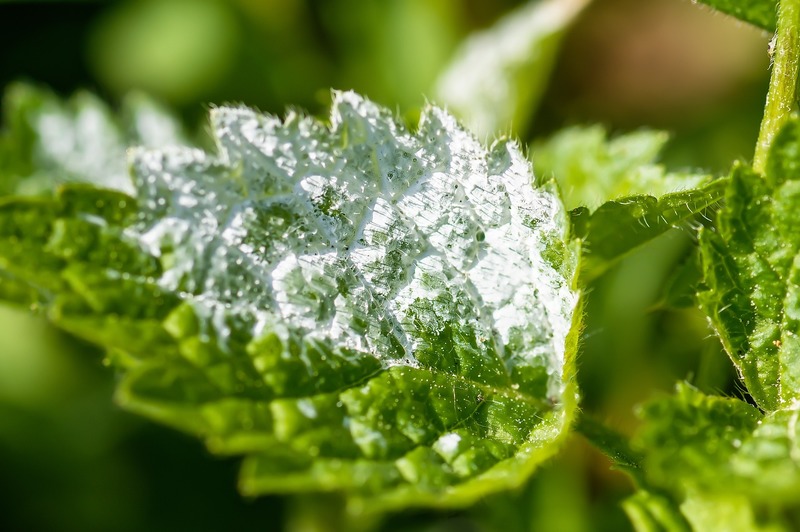Are molds and mildew the same? Do you know what color is mildew compared to molds?
There’s lots of confusion between mold and mildews; some even use both interchangeably. They share a few characteristics, such as being categorized as fungi and growing in wet and humid areas.

There are many kinds of mold, while mildew is a specific type of mold. Continue reading to know more about mildew.
What Is Mildew?
The US Environmental Protection Agency insists that molds involve all microscopic fungi that grow in the forms of multicellular filaments. At the same time, mildew refers to a certain kind of mold, and it also relates to mold growth.
Unlike mold, mildew doesn’t damage the materials it grows on. See this article to discover more about the differences between molds and mildew.
Mildews have a flat growth habit making it easier to remove. It mainly grows on wet fabrics, leather, plants, or woods.
To grow, it needs any organic material to feed in, abundant moisture, and sensible heat. These conditions are helpful for the mildew’s reproduction.
How does mildew look?
Mold may appear in different colors such as white, yellow, black, blue, green, and so on. However, mildew only ranges from white, gray, or yellow, and it gets darker in color with time.
See this article to help you know what color is mold and point out different color molds in your home.
The texture of mildew would often be fuzzy and, other times, slimy. It also smells musty and earthy.
There are two kinds of mildew which are downy mildew and powdery mildew.
Downy mildew appears like yellow to white patches on the surface. It thrives in areas with wet and high humid conditions.
While it’s easier to identify powdery mildew as this appears as gray or white powdery spots. This grows well in places with high humidity and dry climate.
Although seldom fatal, it can rob nutrients and water if left on plants, leading to slower growth or withering.
Is mildew harmful?
Mildew can still present a threat to health, but it’s relatively milder compared to mold. Coughing, sneezing, headaches, sore throat, and breathing problems, these reactions may happen after inhaling mildew spores.
The outcome can vary from person to person; those with asthma, allergies, or preexisting conditions may have more severe issues. It is most dangerous for infants, pregnant women, children, the elderly, and people with respiratory problems.
Mildew is present everywhere in our environment. Tiny portions wouldn’t risk your health, but large amounts can negatively affect anyone.
Mildew affects not only the people but also their surroundings. Admittedly, it only grows on the surface of a material, so it doesn’t do severe damage.
Mildews would often develop in wet places around 24-48 hours, and then spores would be produced, leaving it traveling through the air.
Mildew Prevention
Although mildew wouldn’t cause massive destruction to its surroundings, it’s always better not to let it grow anywhere near your home.
Once you spot an area growing mildew, immediately avoid exposure for too long in mildew spores by taking action. And here are a some pieces of advice to take note of to prevent mildew growths:
- Clean, as often as needed, your pantries, bathrooms, basements, and other places where mildew might grow.
- Use electric lights on smaller areas such as closets to keep inside dry. Additionally, on sunny days, air out the items in your wardrobe.
- Never let clothes or fabrics lie around wet and properly hang them to dry. Dry washed garments thoroughly and quickly before storing.
- Fix water leak issues as soon as possible.
- Improve air circulation inside your home by opening windows or using exhaust fans. And make sure that your storage and cabinets are dry and well-ventilated.
- Use a dehumidifier to keep your home dry.
- If you own an air conditioner, set it to 73°F-81°F during the hot season, and 68°F-76°F in the cold season.
- Use CLR mold and mildew remover, which also helps prevent the mildew spores from dispersing and growing in another area. See this article to know where to buy CLR mold and mildew remover.
- If you have access to chemicals that can absorb moisture, such as silica gel, molecular sieves, and activated alumina, then you can use those. Make sure to follow instructions and use them properly.
- Use sprayable fungicide products on fabrics for mildew protection. Proceed with caution when using this kind of product.
As for removing mildew, the following might help you:
- For clothing and fabrics, first, brush the affected surface outdoors, then wash it with detergent and water before rinsing, finally let it dry under the sun. If a stain remains, use lemon juice with salt to treat it.
- While for leather, first damp cloth in 1 portion rubbing alcohol and 1 part water, then wipe it, lastly dry in an airy place.
- As for rugs and carpets, sponge the affected area with thick suds, then wipe the suds with a water-wetted cloth, finally let it dry under the sun.
Conclusion
Mold and mildew are different from one another. To identify this better, then knowing what color is mildew and mold can help.
Mildew is milder than molds in terms of health risks and damage caused to its surroundings. But then, it’s always best to treat it immediately upon catching sight because long-term exposure to this can bring severe health risks too.
Protect your health and your belongings as best as you can.
